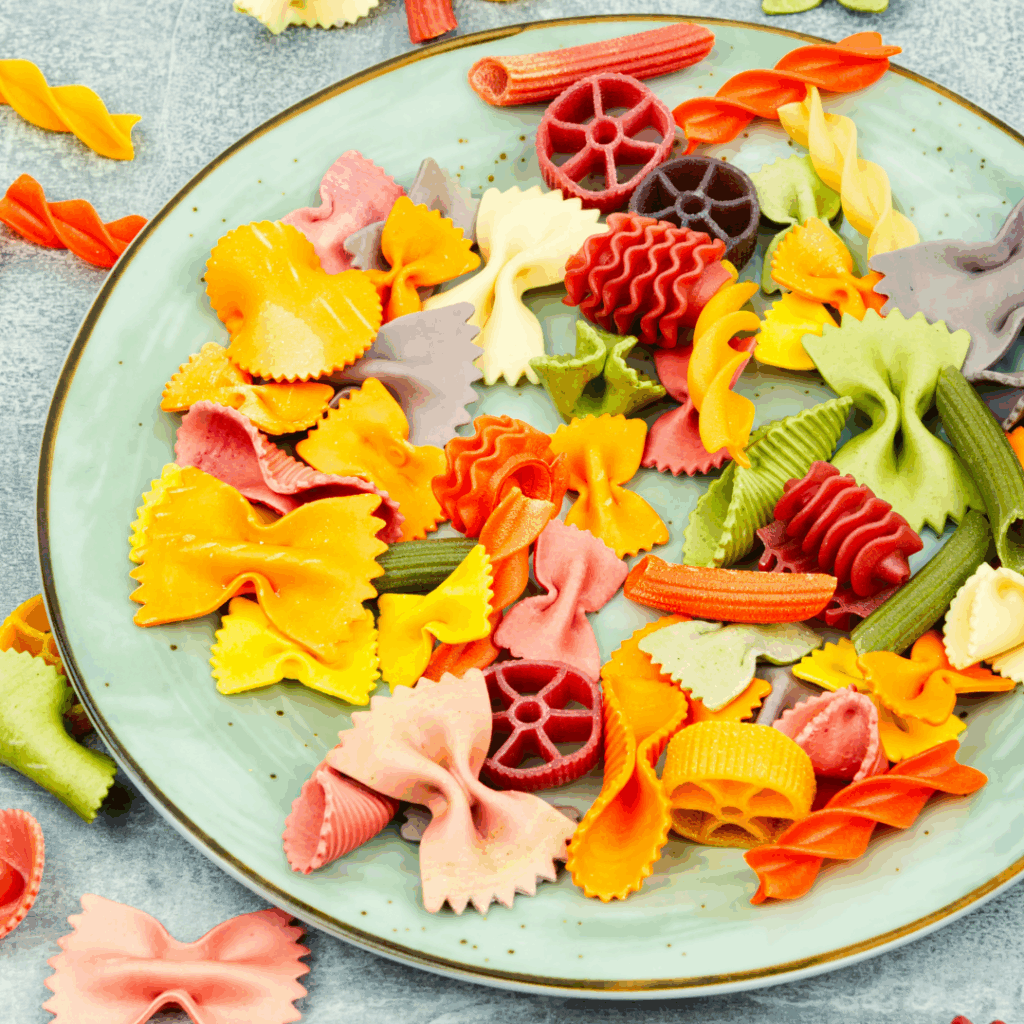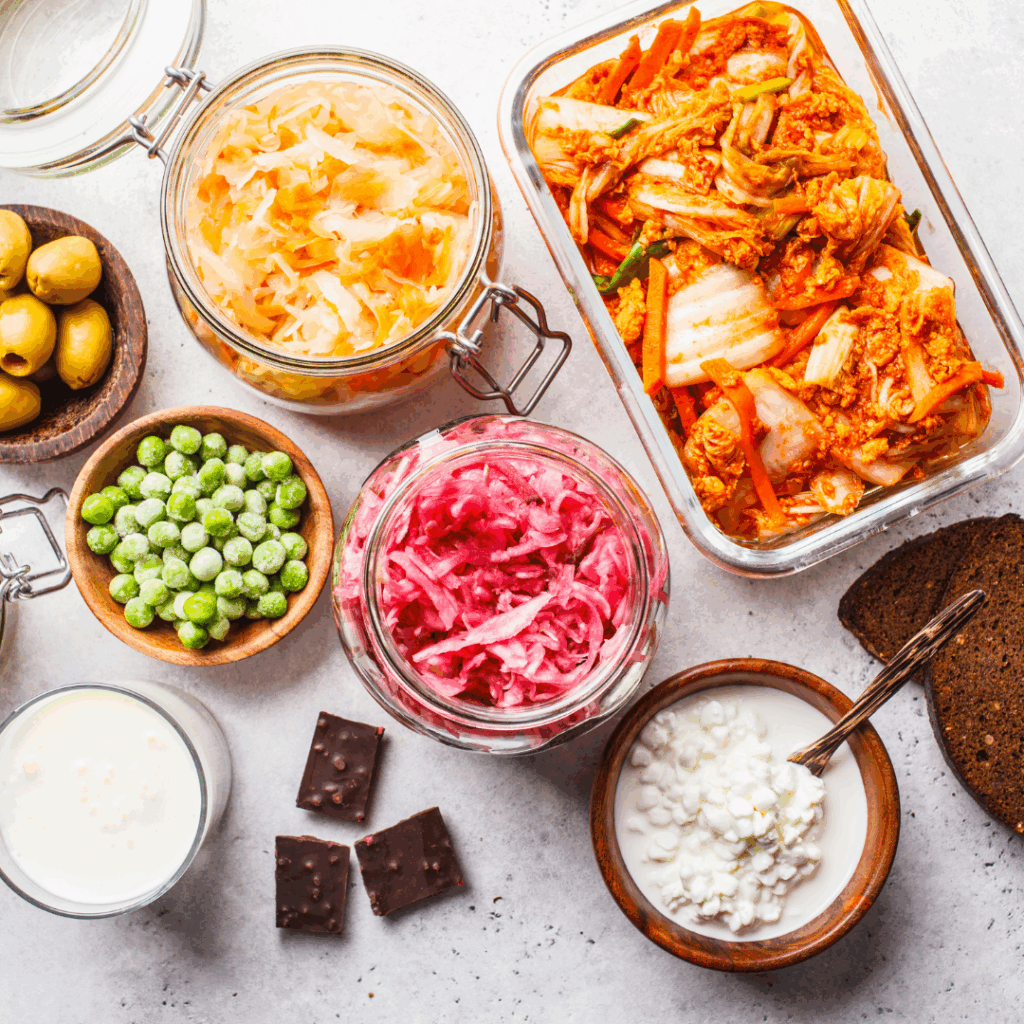- No Comments
- Chelsey Landry, RD
This post was sponsored by Amara Organic Foods and contains affiliate links, please view our disclosure policy for more details.
From holding their head up on their own to taking their first steps, your baby achieves so many developmental milestones in their first year of life – it’s pretty amazing when you think about it!
Picture your baby’s tiny fingers delicately picking up a pea or Cheerios. That’s their pincer grasp in action. Not only is it adorable, but it’s also a sign that your little one is hitting another significant developmental milestone!
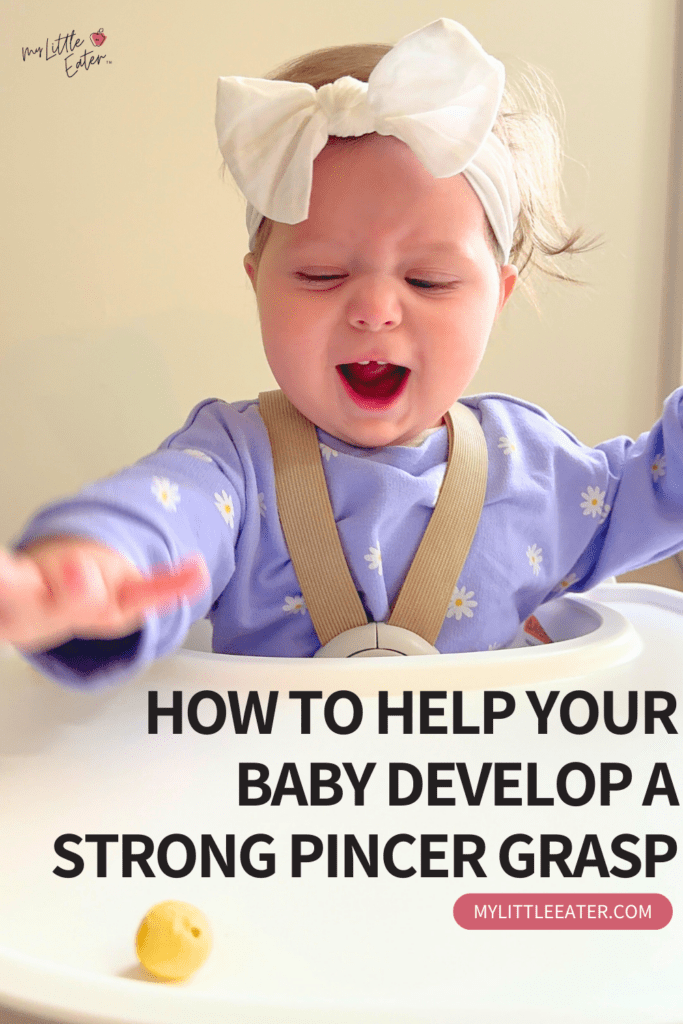
We’re here to guide you through everything you need to know about your baby’s pincer grasp development! We’ll also be giving you practical tips on how you can help your baby develop a strong pincer grasp by choosing the right types of finger foods.
This is a crucial part of helping babies develop their pincer grasp. One of our favorite tools for helping babies practice their pincer grasp is Amara Organic Smoothie Melts. They’re easy and convenient to offer your baby anytime, plus they have no added sugar, and simple, clean ingredients. Most importantly, they’re safe for your baby and melt in the mouth!
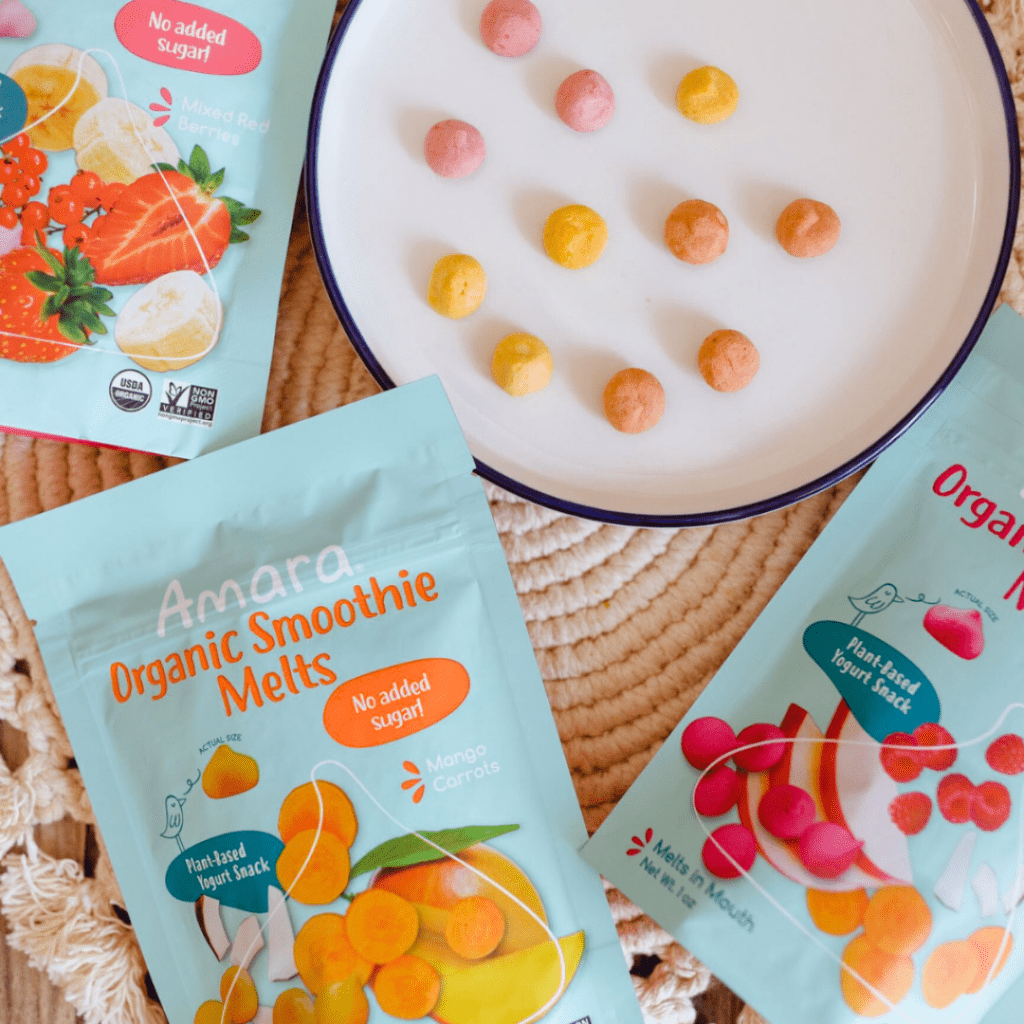
Table of Contents
What is the pincer grasp?
The pincer grasp is when the tip of the index finger and the tip of the thumb come together in a pinching motion to pick up objects (1). This is a fine motor skill that uses small muscles in a baby’s hand to pick up small items like individual bite-sized pieces of food (1).
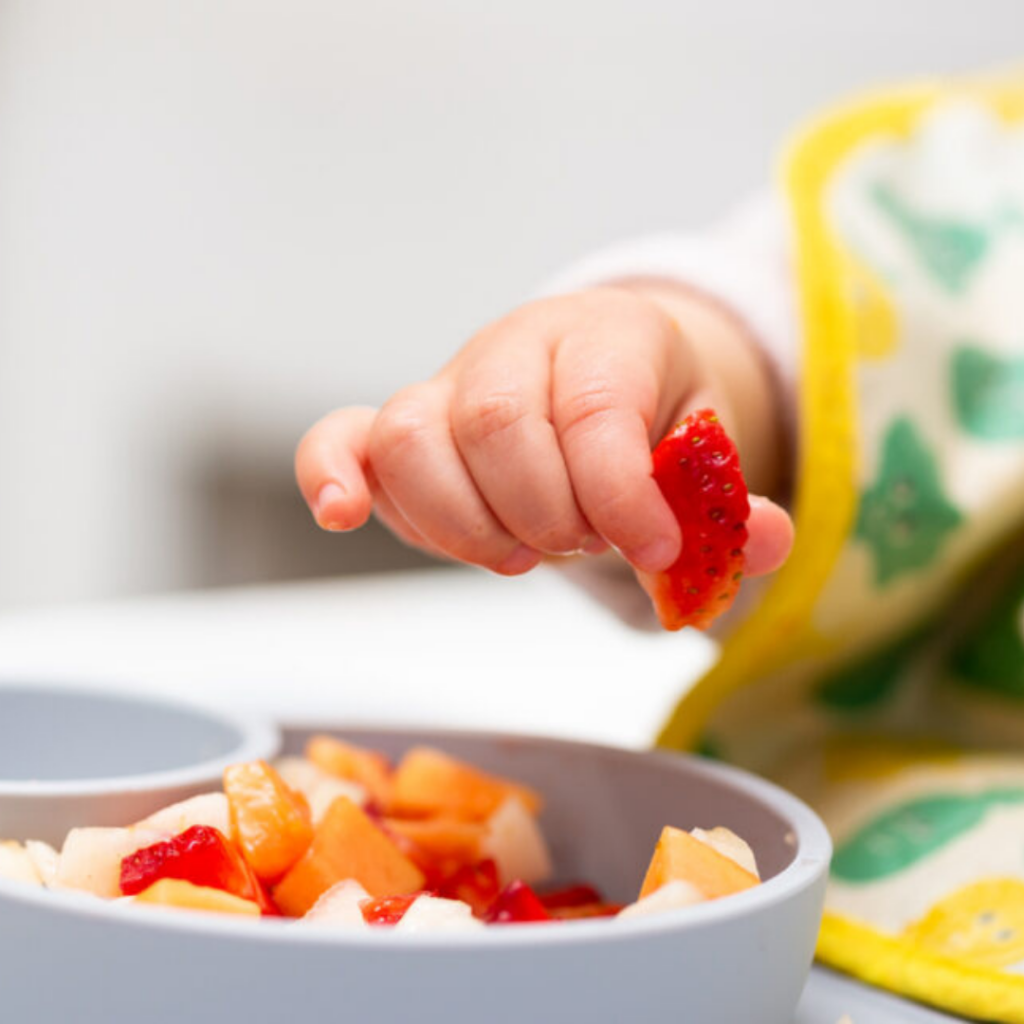
Fine motor skills use smaller muscles in the body like our hands and fingers, and they’re dependent on the development of gross motor skills (2). Fine motor skills include the ability to reach out for food with one hand, transfer food from hand to hand, and use a raking motion to pick up food (2).
The pincer grasp is an important milestone for your baby as it shows that they’re building hand control and coordination. The pincer grasp prepares baby’s hand for writing and supports many other activities such as using scissors, doing up buttons, self-feeding, and other fine motor skills that are important for everyday activities!
Should a 6-month-old have a pincer grasp?
Babies do not have their pincer grasp at 6 months of age and it is not needed for starting solids.
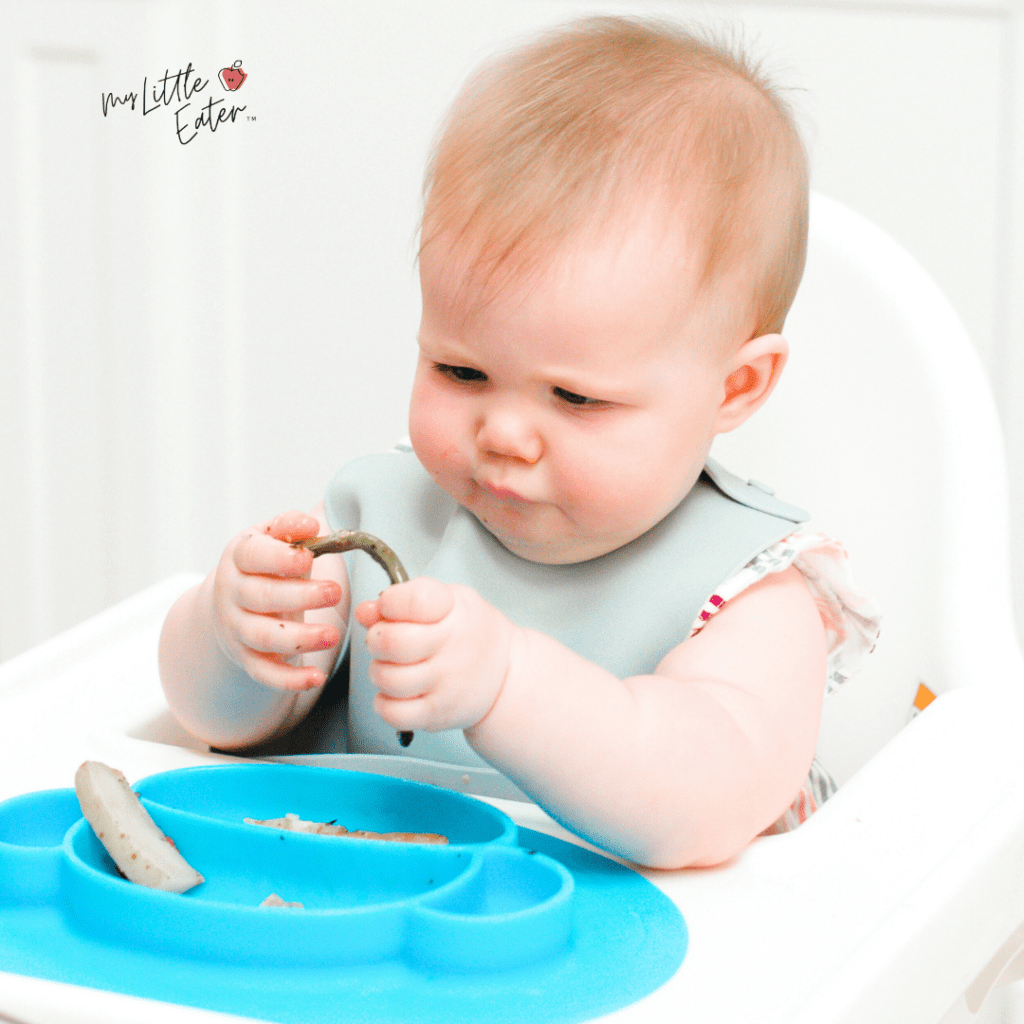
At 6 months, the age when most babies start solids, they only have their palmar grasp. The palmar grasp is the ability of your baby to hold an object in their hand by wrapping their fingers around it and stabilizing it against their palm.
In fact, it’s physically very difficult and nearly impossible for your baby to pick up tiny bite-sized pieces of food for the first few months of their solids journey.
At what age does a baby's pincer grasp develop?
Most babies only begin to develop the pincer grasp around 9 months of age (1). However, they need time and lots of practice to develop a strong and precise pincer grasp. Most babies only fully master this skill between 11-12 months of age (3).
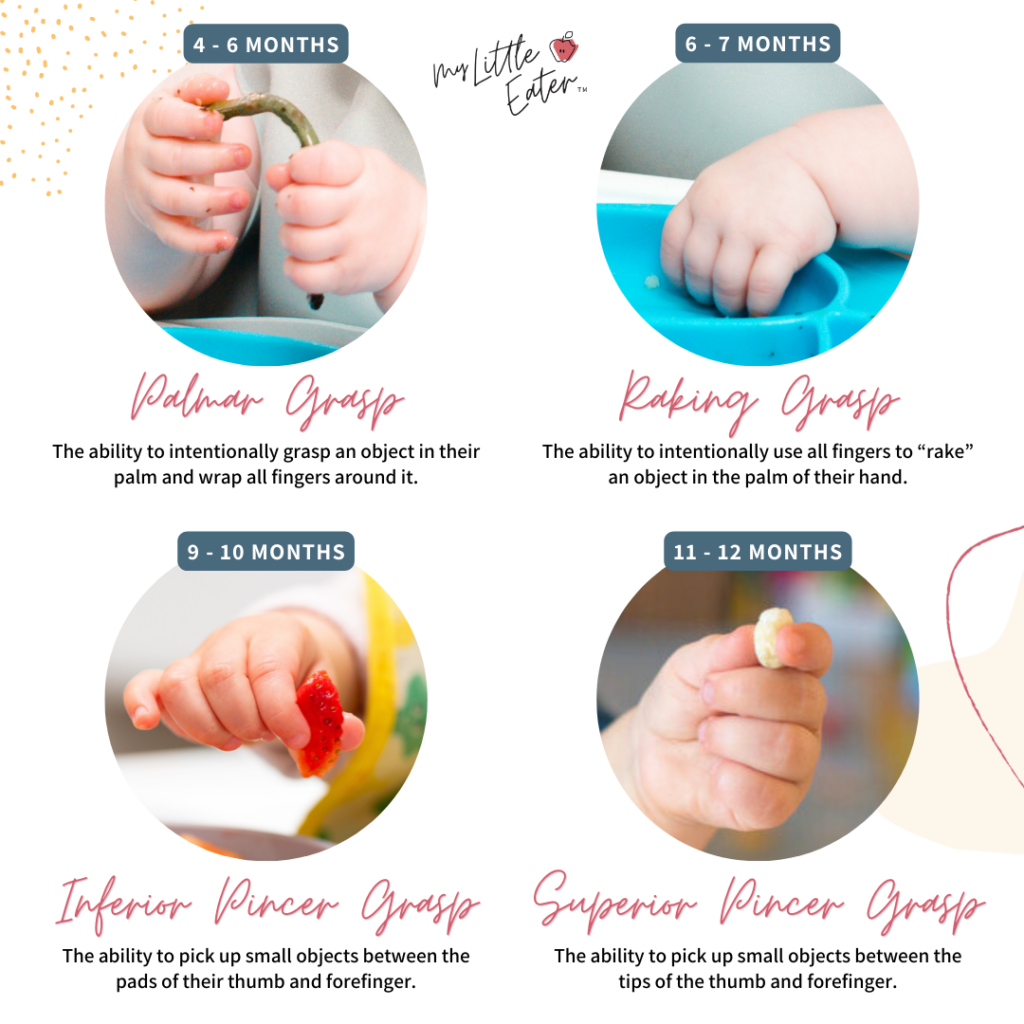
Your baby will not develop their pincer grasp overnight, it will take time and consistent practice. Various stages of development help babies work their way up to a superior pincer grasp.
The stages of development include (3):
- Palmar grasp: Develops between 4-6 months of age. Allows baby to intentionally grasp an object in their palm and wrap all fingers around it.
- Raking grasp: Develops between 6-7 months of age. Allows baby to use all of their fingers to rake an object into the palm of their hand.
- Radial palmar grasp: Develops around 8 months of age. Think of this as half palmar grasp and half pincer grasp! This allows your baby to pick up a small object with their fingers while using the top of their palm to stabilize it. The video below shows baby Aila, 8 months, picking up an Amara Organic Smoothie Melt with her radial palmar grasp.
- Inferior (or crude) pincer grasp: Develops between 9-10 months of age. Allows baby to pick up small objects using the pads of their thumb and index finger.
- Superior pincer grasp: Develops closer to 12 months of age. Allows baby to pick up small objects using the tips of their thumb and index finger.
6 ways to help babies practice their pincer grasp
Fine motor development in babies, like the pincer grasp, happens by building on other movements and gross motor skills. If you find yourself wondering how to help your baby’s pincer grasp develop, we’ve got 6 of the best tips for you to help your baby perfect their pincer grasp!
1. Tummy time and playtime on the floor
Tummy time on the floor with age-appropriate toys helps baby build up their core muscles and supports the development of normal spinal curvature and alignment (4).
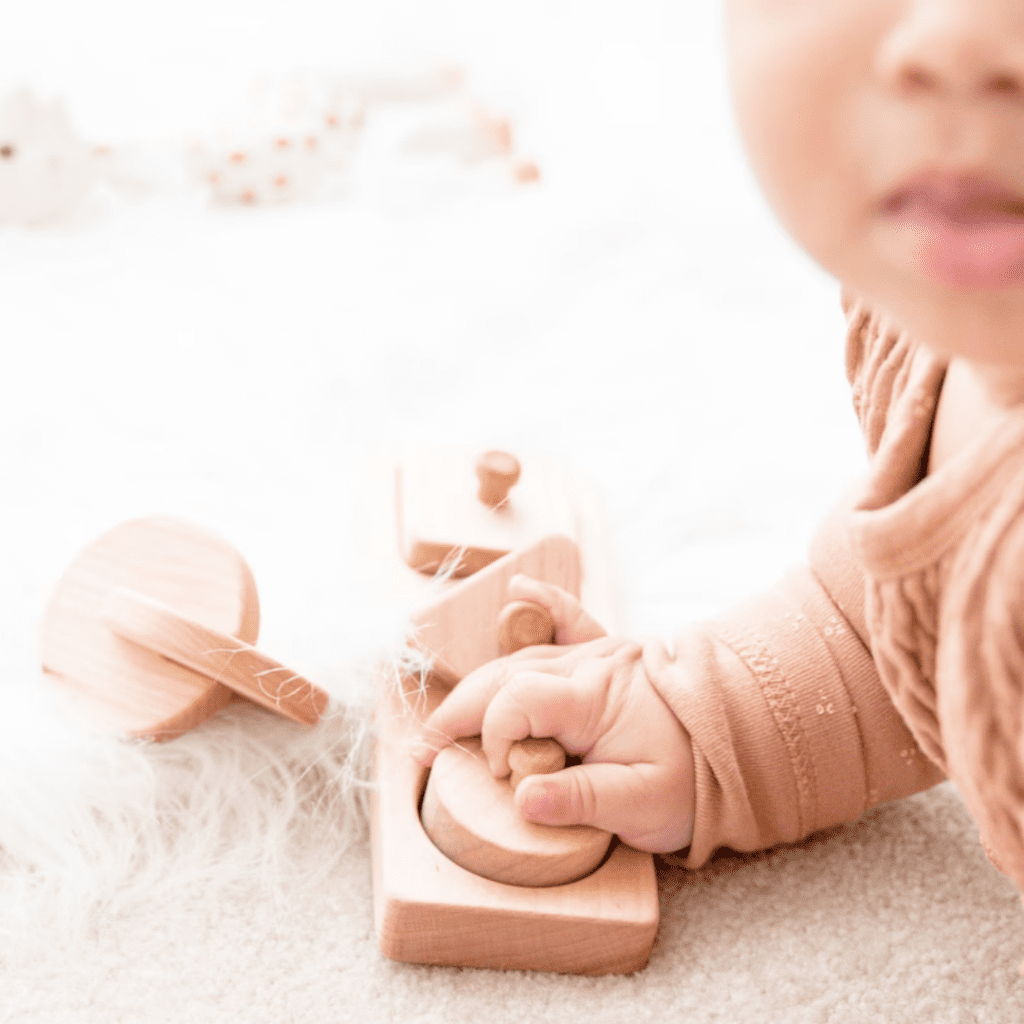
Strong core muscles and a normal spinal curvature are needed to help baby feel stable enough to reach their arms out and start using their hands and fingers to grab objects (4).
Crawling, rolling, and climbing is also beneficial for building your baby’s core, arm, shoulder, and hand muscles. Crawling also helps develop hand-eye coordination. This is an important building block for later skills like catching a ball or handwriting (4).
2. Encourage self-feeding with safe bite-sized pieces of food
Once you see baby’s pincer grasp starting to emerge around 9 months of age, begin offering baby bite-sized pieces of food that vary in texture, shape, and size. This is one of the best ways to help them practice and develop their pincer grasp! It will encourage them to move their hands and fingers in different ways to pick up a specific food and self-feed.
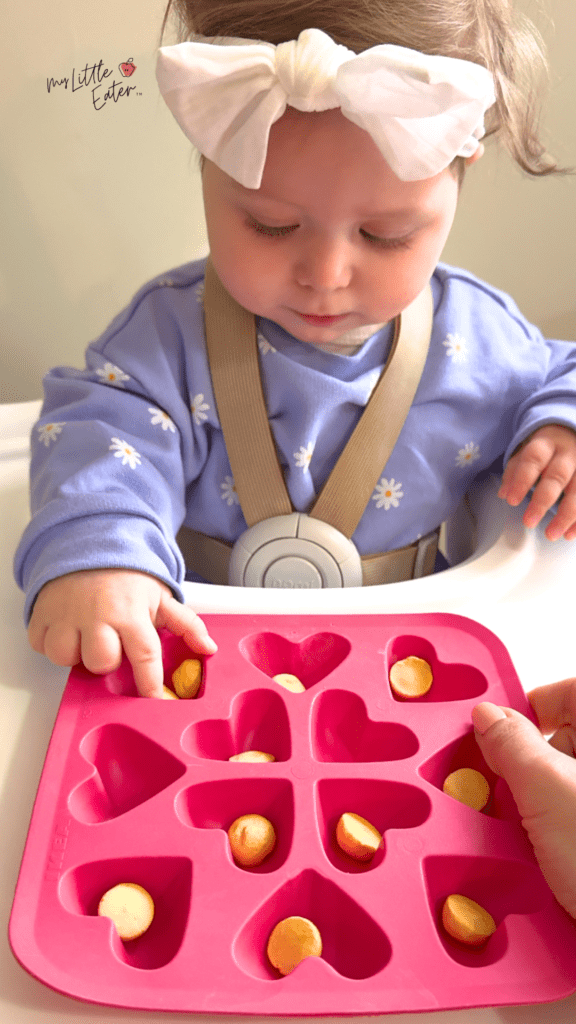
You can use tools like a muffin tray, ice cube tray, or something similar to encourage your baby to use their pincer grasp. This is because these tools help your baby to pick up individual pieces of food from each compartment using their thumb and index finger.
You can also try serving food on their highchair tray instead of in a bowl or a plate. This will naturally encourage baby to practice their pincer grasp because it’s harder to use their raking grasp to pick up food when there’s no bowl or plate to push food up against.
3. Offer foods that help babies with pincer grasp development
When choosing which foods to offer your baby to help them develop their pincer grasp, the most important thing to consider is if the food is safe for your baby. You’ll want to avoid foods that are round, firm, and slippery like whole grapes and blueberries, as these are top choking hazards.
You’ll also want to modify bite-sized slippery foods for baby by adding a nutritious coating or using a crinkle cutter so they don’t become frustrated trying to pick up a food that is way too slippery.
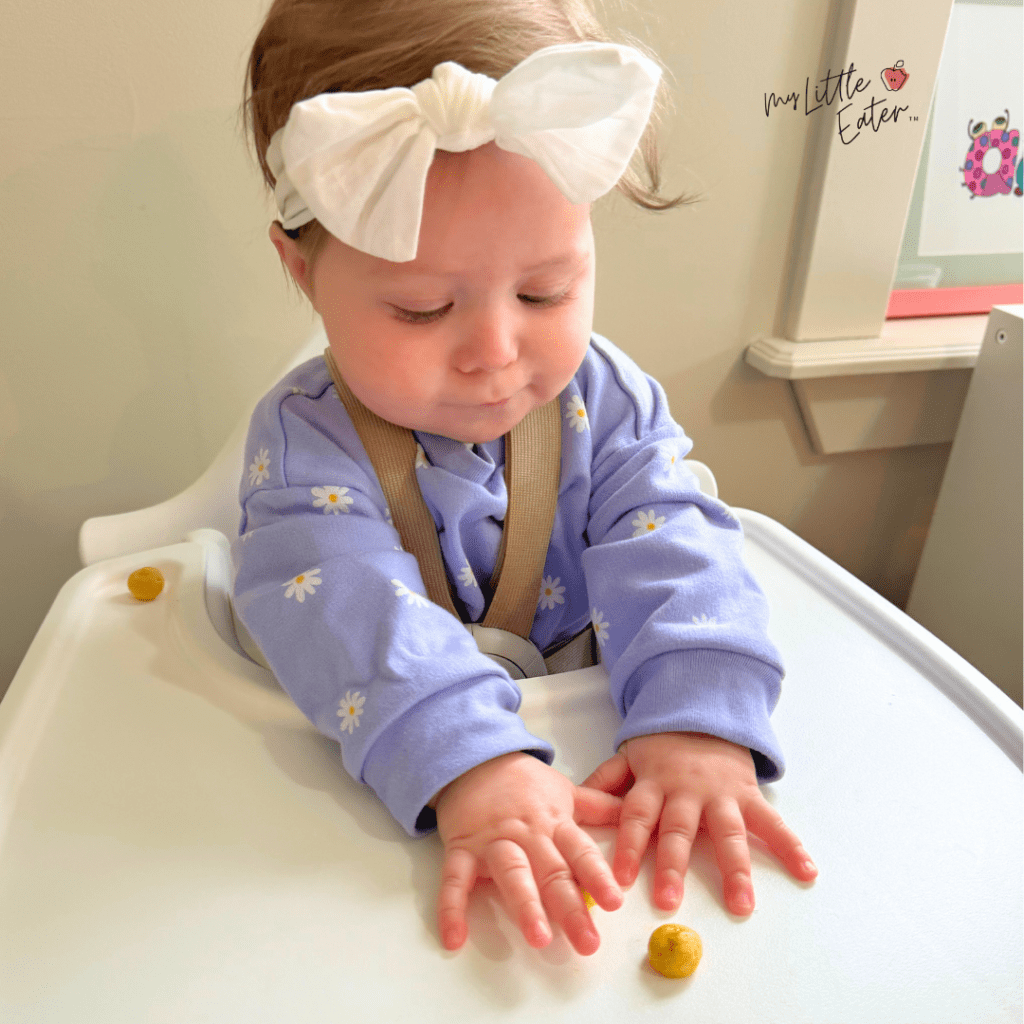
Offer bite-sized foods that are about ½ inch – 1 inch in diameter and that are soft and squishable, such as:
- Flattened/squished cooked beans or chickpeas
- Small pasta like macaroni, orzo, gnocchi, etc.
- Grated or diced ripe/cooked fruits and vegetables (quartered berries, cooked diced apples, small broccoli florets, cooked diced carrots, etc.)
- Loose ground meat
- Flattened cooked peas
- Shredded cheese
- Freeze-dried fruit like strawberries (if they’re hard, you may need to soak them in water first)
- And our top choice – Amara Organic Smoothie Melts!
A perfect nutritious tool for helping babies with their pincer grasp development is Amara’s Organic Smoothie Melts! They’re safe and meltable, easy and convenient, plus they have no added sugar, and only simple, clean ingredients. They’re the ideal food for helping babies practice their pincer grasp!
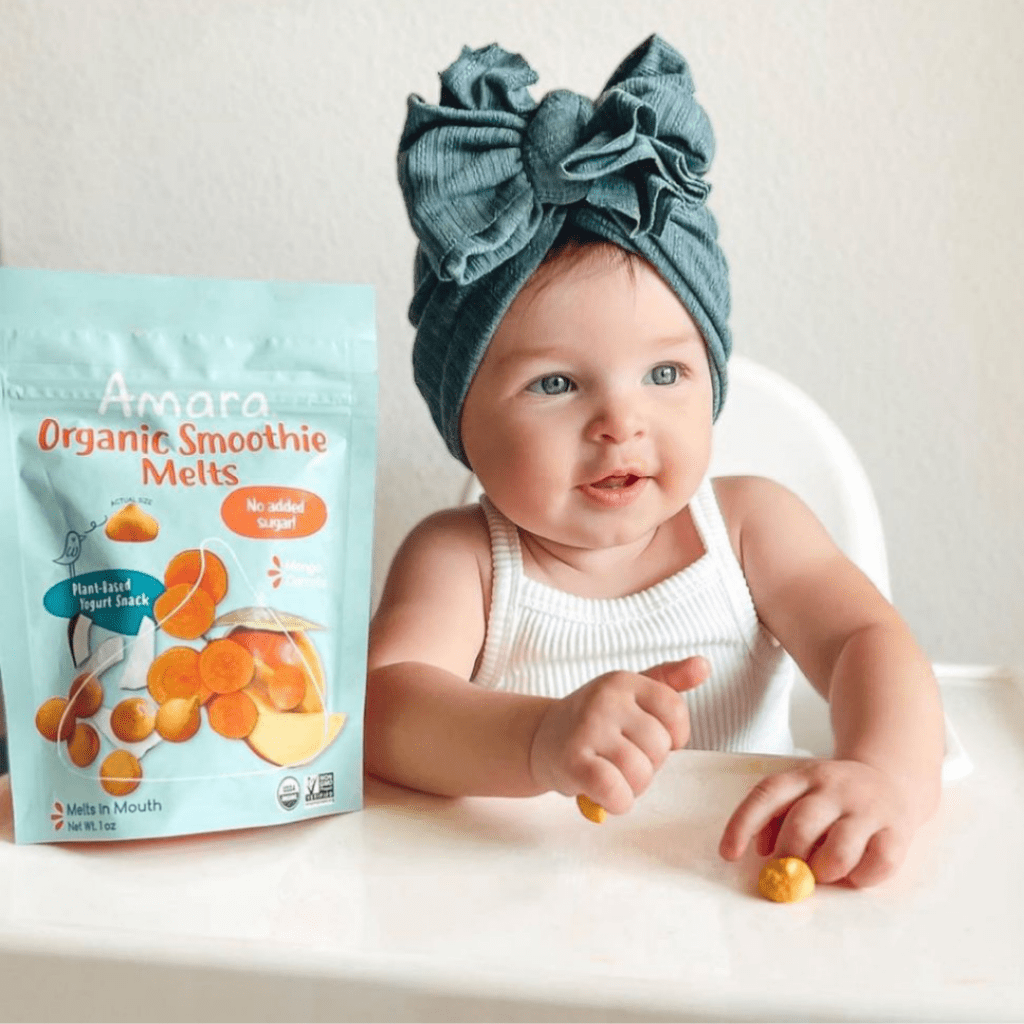
Note: These Smoothie Melts only take about 10 seconds to melt in the mouth when fresh. If you’re still concerned or have had them for a while and are unsure how fresh they are, place them in a bowl of water first so they begin to melt. Then offer those to your baby to practice with – works perfectly!
4. Toys that baby can pull and squeeze
Emptying an entire box of wipes or tissues seems to be one of those activities that babies just absolutely love without rhyme or reason. So why not use that as a way to help them develop their pincer grasp skills?
Pulling an object out of something else allows baby to practice their grasping skills with their fingers. As your baby develops their grasping skills, they will naturally begin to develop their pincer grasp as well.
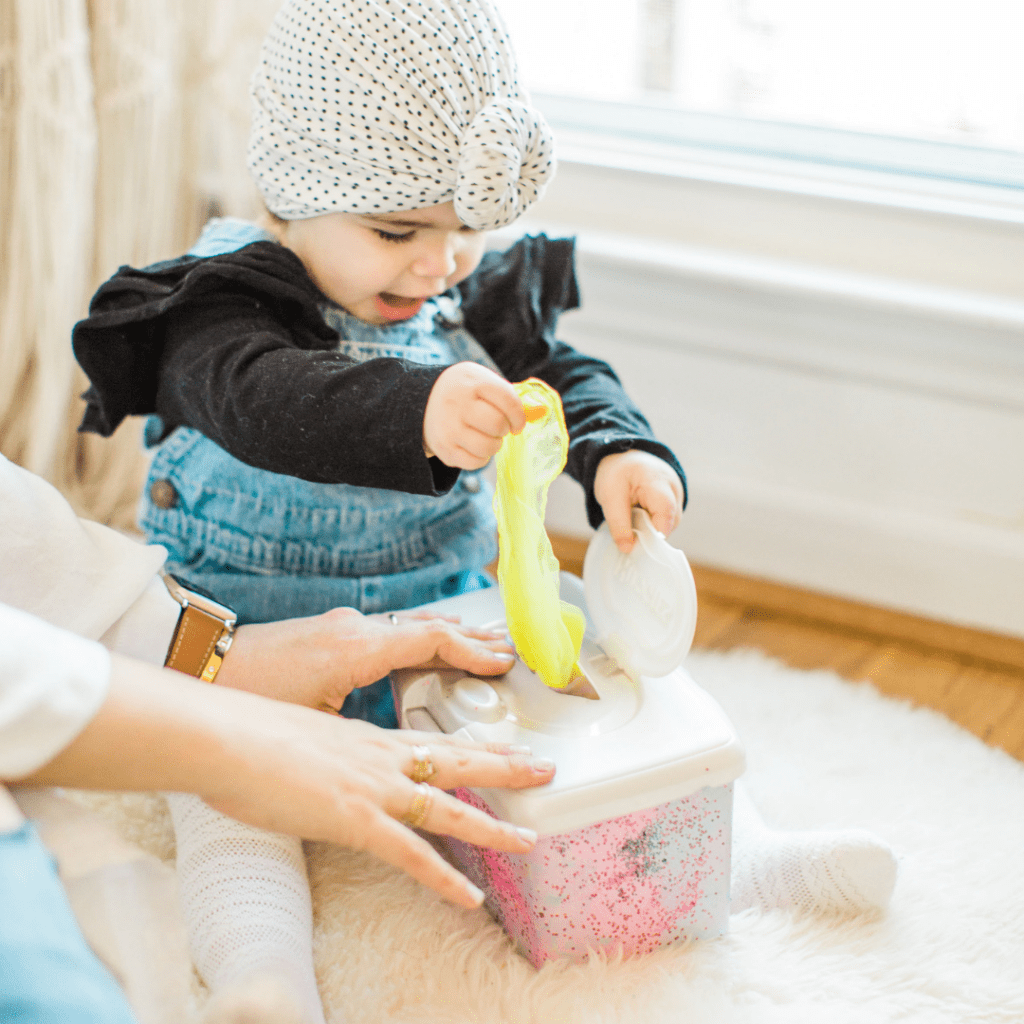
Pincer grasp toys don’t have to be complicated or expensive! Try making a homemade reusable box for your baby using an old wipes container and stuffing it with colored fabric for them to pull out!
5. Tube-shaped toys
Cylindrical and tube-shaped items or toys can be useful for helping your baby practice important hand movements like making a rounded “O” shape. When you picture what baby has to do with their hands to pick up a tube-shaped object, it’s the same shape they will need to make with their hand to perfect their pincer grasp.
To start, you’ll want to offer bigger cylindrical shapes, about the size of the inner part of a paper towel or toilet paper roll or large wooden dowels. This will allow your baby to easily pick up the object and practice that “O” shape with their hands.
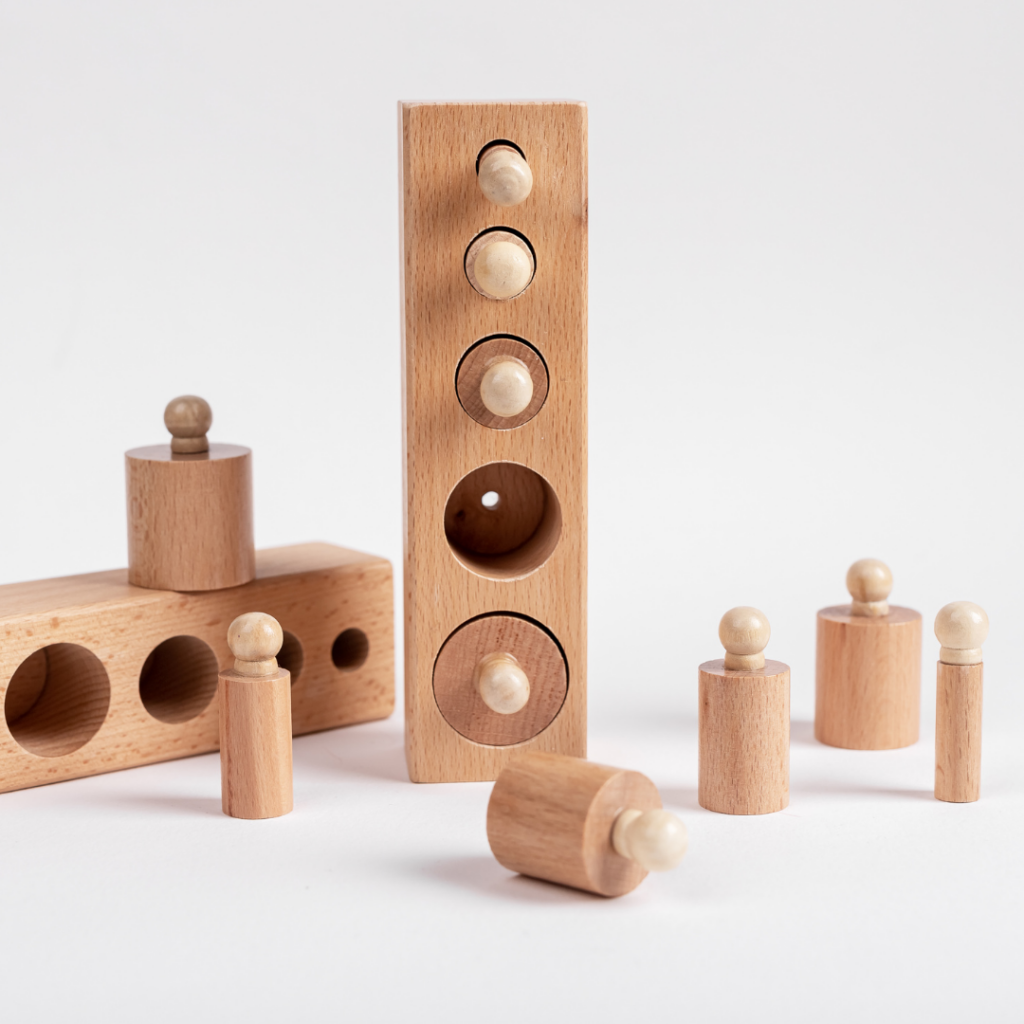
As your baby approaches 9 months of age, you can offer smaller cylindrical shapes for them to play with like a silicone straw or toys with smaller cylindrical dowels.
6. Pointing activities
Pointing activities help babies learn how to use their individual fingers, which is beneficial for helping them master their pincer grasp.
Most babies don’t start pointing on their own until around 9 months of age. However, you can begin pointing to items as early as 6 months and encourage them to do the same. Practice makes perfect!
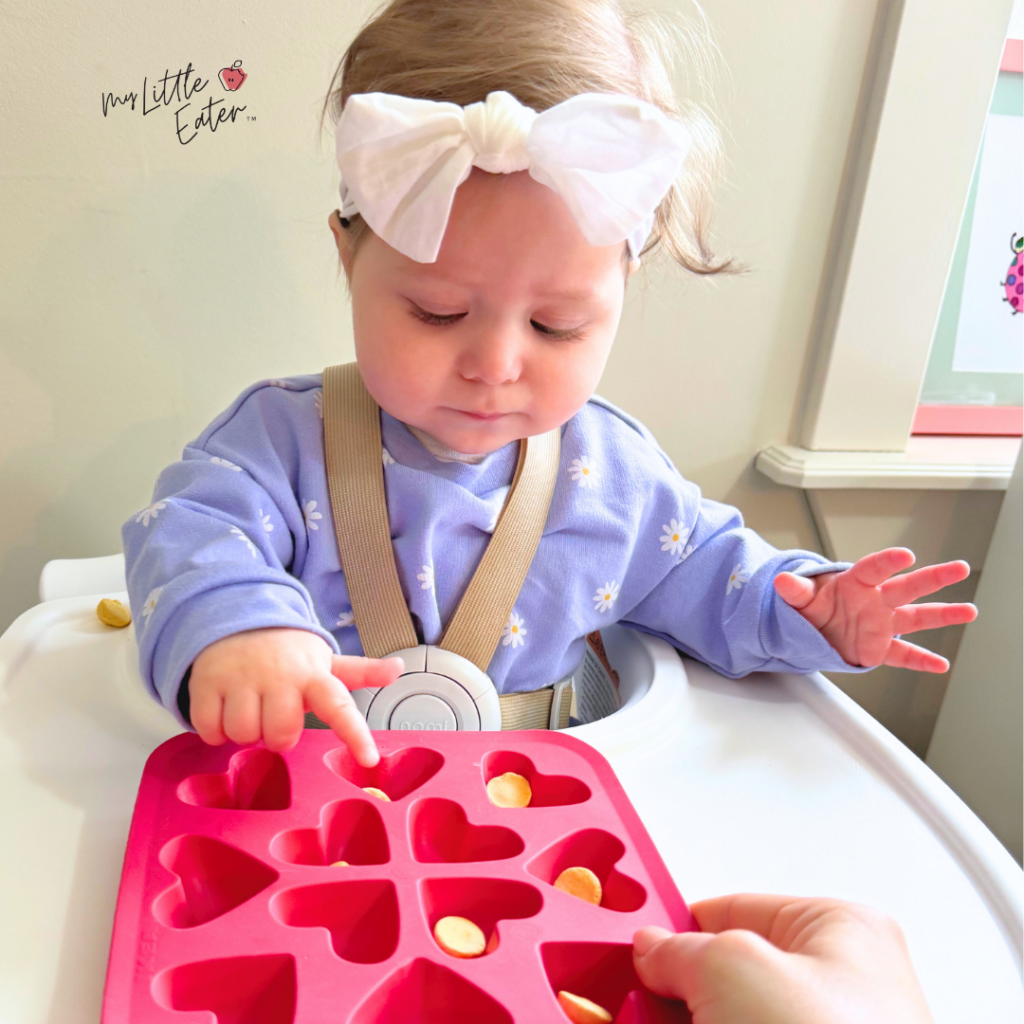
You can practice pointing activities with your baby while reading books and pointing to pictures or with items around the house, body parts (eyes, nose, ears, mouth), toys, etc.
How to serve foods for pincer grasp
Once you start to see the pincer grasp emerge at around 9 months of age, you can then start serving baby smaller bite-sized pieces of food, about 1/2 an inch to 1 inch in size. You can also serve foods that are smaller than this, like grated and minced foods, which are shown in the image below.
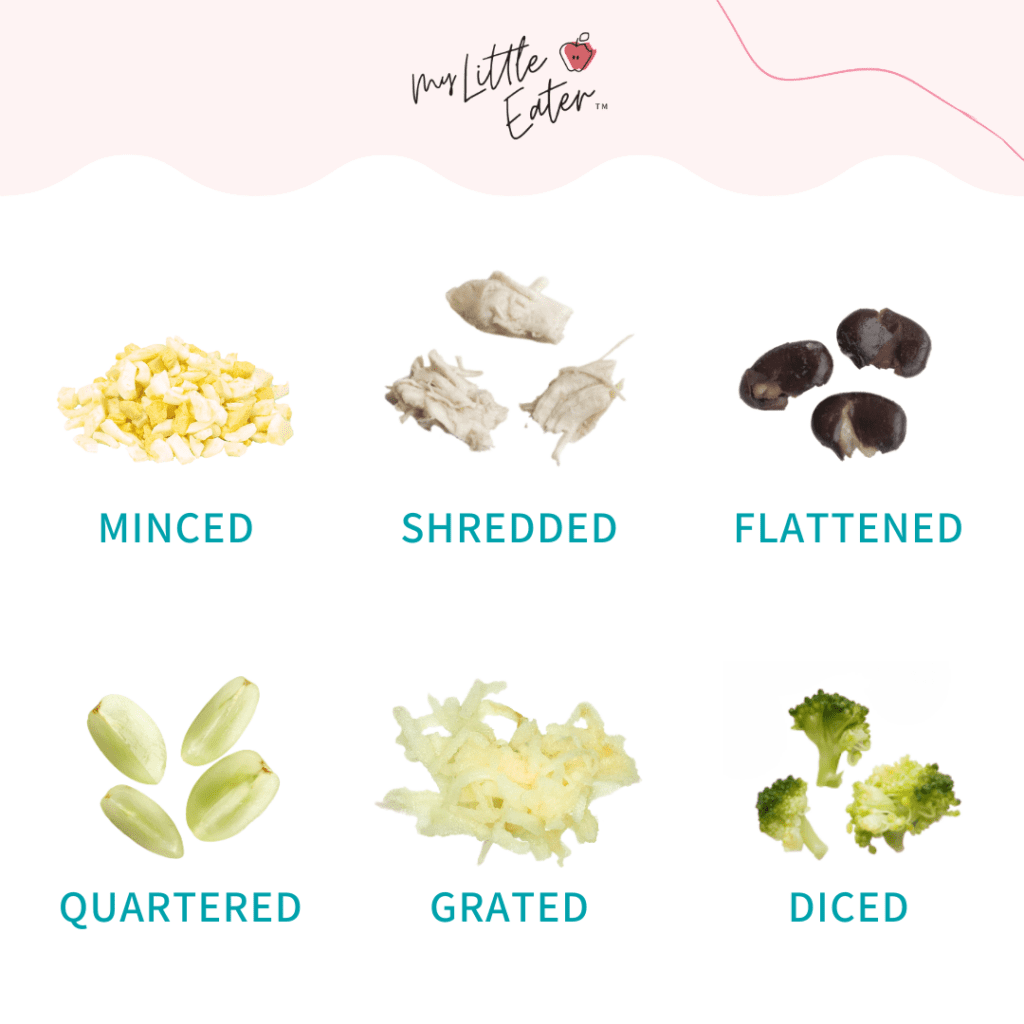
As your baby works on mastering their pincer grasp, you’ll want to continue to offer some bigger finger-shaped foods as you did from 6-9 months of age. This way, they can continue to practice holding and taking bites out of larger pieces of food, while also learning how to manage small pieces.
This also ensures that they won’t become frustrated if they can’t pick up all of the small pieces of food, and can use the larger-sized foods to fill their tummy!
It can be hard to know how to prepare all different types of foods for your baby in the safest way possible, so that’s why we’ve developed the Texture Timeline™ food library inside our Baby Led Feeding course. This database allows you to search a food and see exactly how to prepare it in easier to more advanced ways so that it’s safe for your baby no matter what texture stage they’re in!
Are bite-sized pieces of food a choking hazard for baby?
Bite-sized pieces of food can be a choking hazard for your baby depending on their size, shape, and firmness.
Once your baby has fully developed their pincer grasp, it’s still important to avoid high-risk choking hazards including small, round, firm, and slippery foods like whole grapes, whole nuts, whole blueberries, etc. These choking hazards need to be modified for babies and toddlers until they reach 4 years of age and have advanced chewing skills.

Learn more about how to modify high-risk choking hazards for babies and toddlers.
Changes to expect during pincer grasp development
Not only do babies need to master this new skill of picking up tiny pieces of food and getting it into their mouth, but they also need to learn the new skill of how to manage, chew, and swallow these much smaller pieces of food!
Bite-sized pieces of food can be much harder to track in the mouth, are hard to isolate and spit out if needed, and they’re harder to perfectly position and chew compared to larger finger foods.
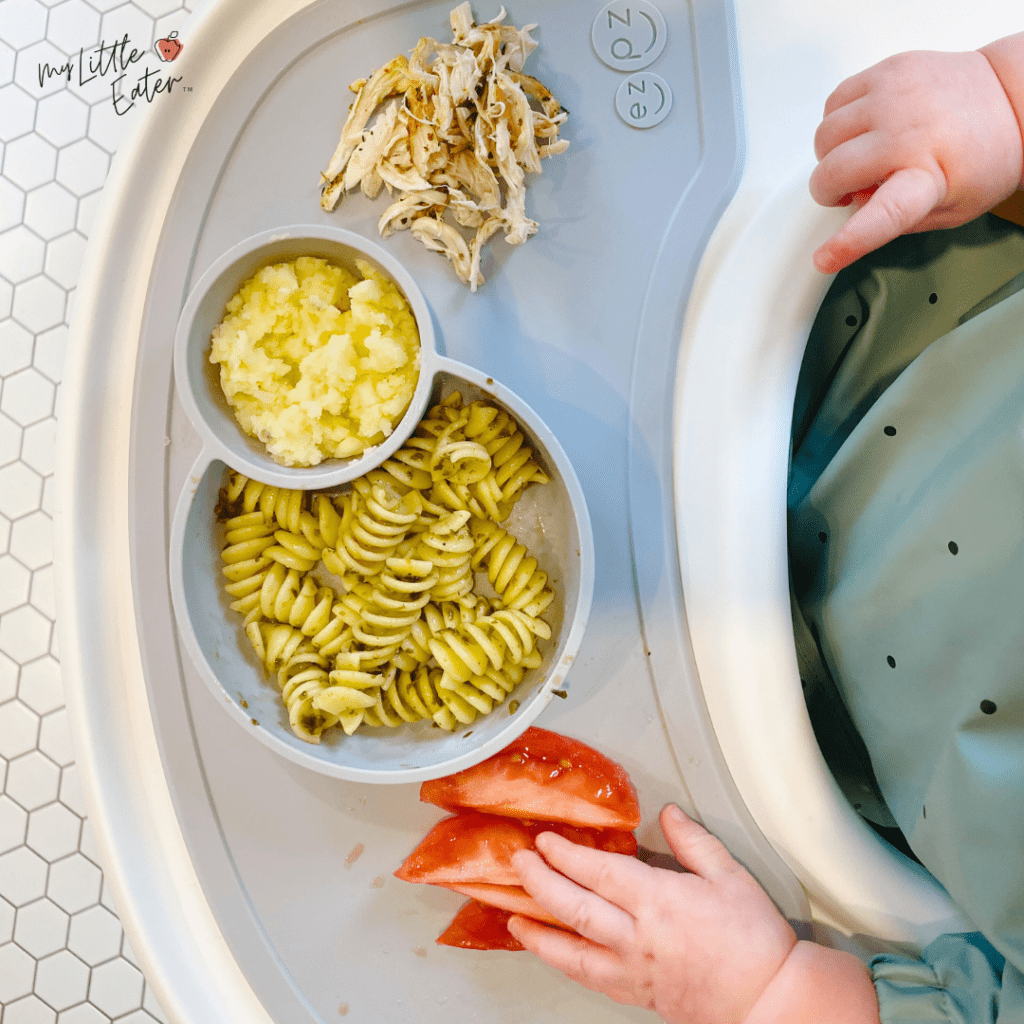
Even if your baby has mastered their superior pincer grasp, their oral motor skills (like chewing) don’t necessarily develop at the same pace as their fine motor skills.
Therefore, you can expect to see some changes once you start offering bite-sized pieces of food to your baby, including:
- Gagging and spitting out pieces of food.
- Added frustration as they continue to learn how to pick up these smaller foods.
- Potentially fussier during meals due to the frustration (which is why we suggest offering varying sizes to keep things positive).
What if my baby isn’t developing their pincer grasp?
If you’ve been working on helping your little one practice their pincer grasp using the tips above for about 3 months and they still haven’t mastered it by 12 months of age, or are still not yet attempting a pincer grasp, speak with their healthcare provider. They can help you determine if your baby needs added support with building fine motor skills.

We know this next step of introducing smaller, bite-sized pieces of food may be nerve-wracking! After all, you may have JUST started getting comfortable with bigger finger foods. Understandably, you may be worried about your baby’s safety, gagging, and how they will manage these small foods in their mouth.
Since this transition may feel scary for you, we suggest starting out with something easy that is safe for your baby. Using a meltable product, like Amara’s Organic Smoothie Melts, will help you feel comfortable knowing your baby is safe! They’re super convenient and easy to serve to your baby, plus they have no added sugar, and simple, clean ingredients – meaning they’re dietitian-approved!
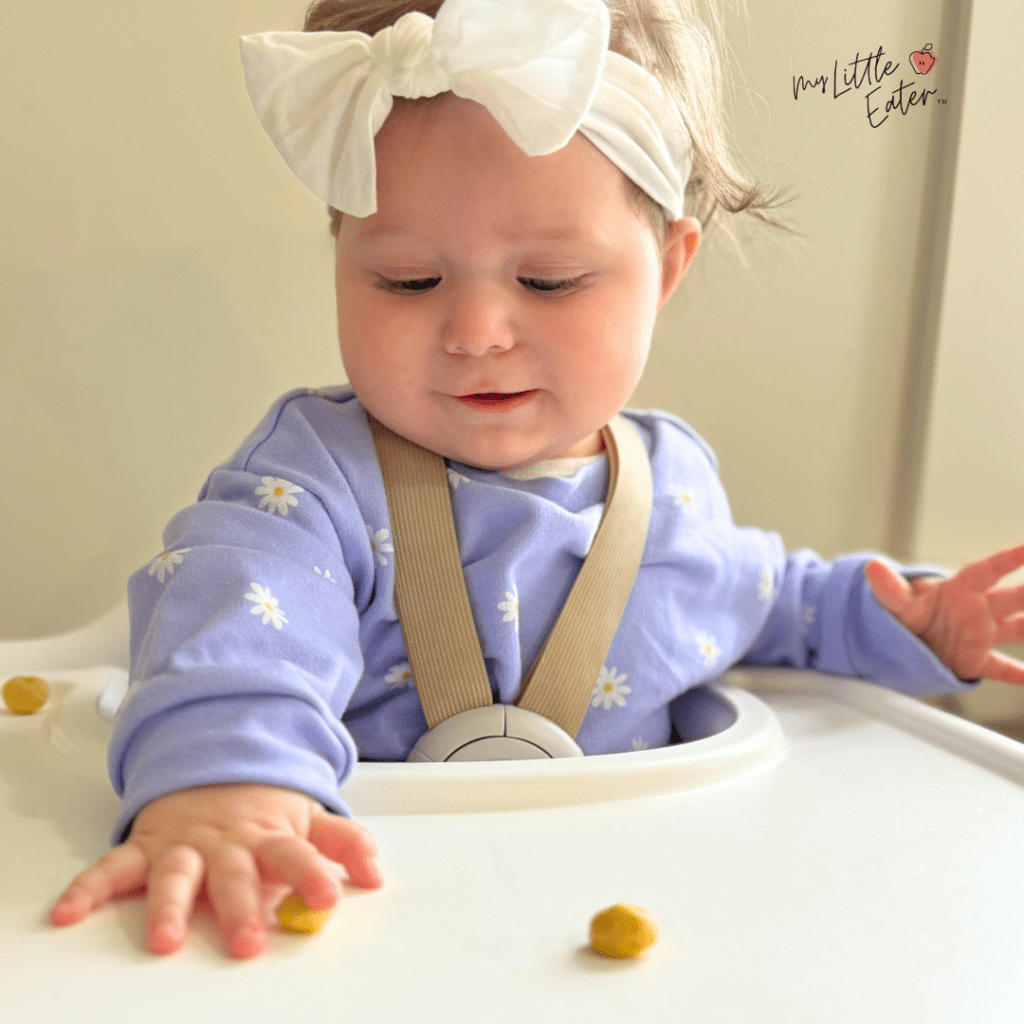
References:
- Dixon, S. D., & Stein, M. T. Encounters with children. Philadelphia: Mosby. 2006.
- Campeau, M., Philippe, S., Martini, R., & Fontaine‐Bisson, B. (2021). The baby‐led weaning method: a focus on mealtime behaviours, food acceptance and fine motor skills. Nutrition Bulletin, 46(4), 476-485.
- Gerber, R. J., Wilks, T., & Erdie-Lalena, C. (2010). Developmental milestones: motor development. Pediatrics in review, 31(7), 267-277.
- Hewitt, L., Kerr, E., Stanley, R. M., & Okely, A. D. Tummy time and infant health outcomes: a systematic review. Pediatrics, 145(6), 2020.
IS THIS HELPFUL? PIN IT TO SAVE FOR LATER!
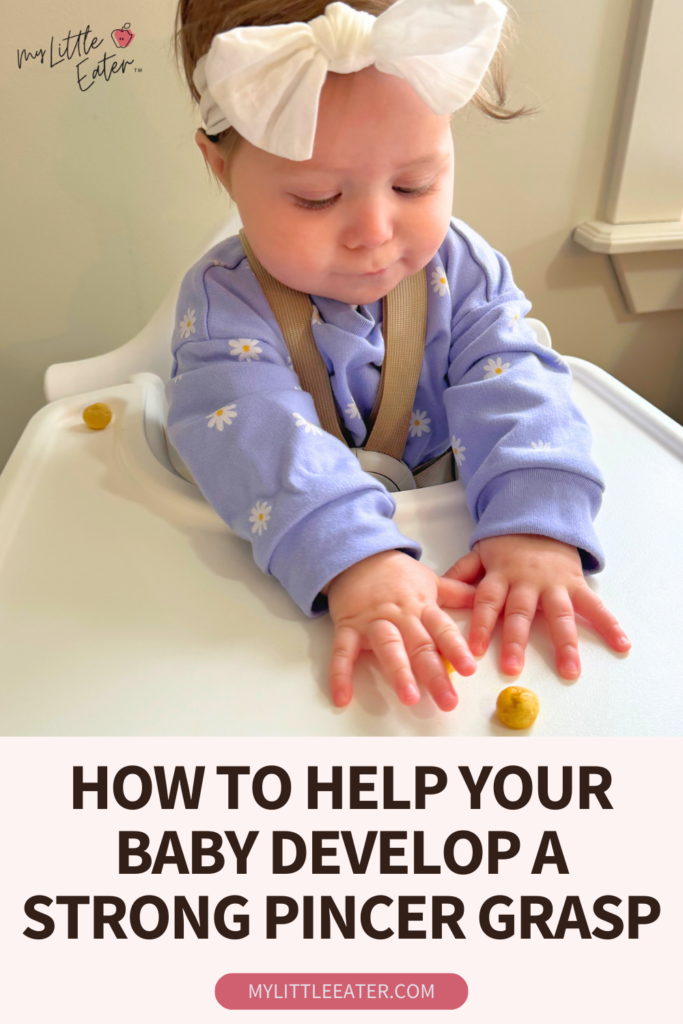

Chelsey Landry, RD
Community Dietitian at My Little Eater Inc., and bunny-mom to Hickory. Chelsey offers one-on-one counselling to parents of babies and toddlers that need more customized support. Learn more by booking a free discovery call with her today!

Chelsey Landry, RD
Community Dietitian at My Little Eater Inc., and bunny-mom to Hickory. Chelsey offers one-on-one counselling to parents of babies and toddlers that need more customized support. Learn more by booking a free discovery call with her today!

